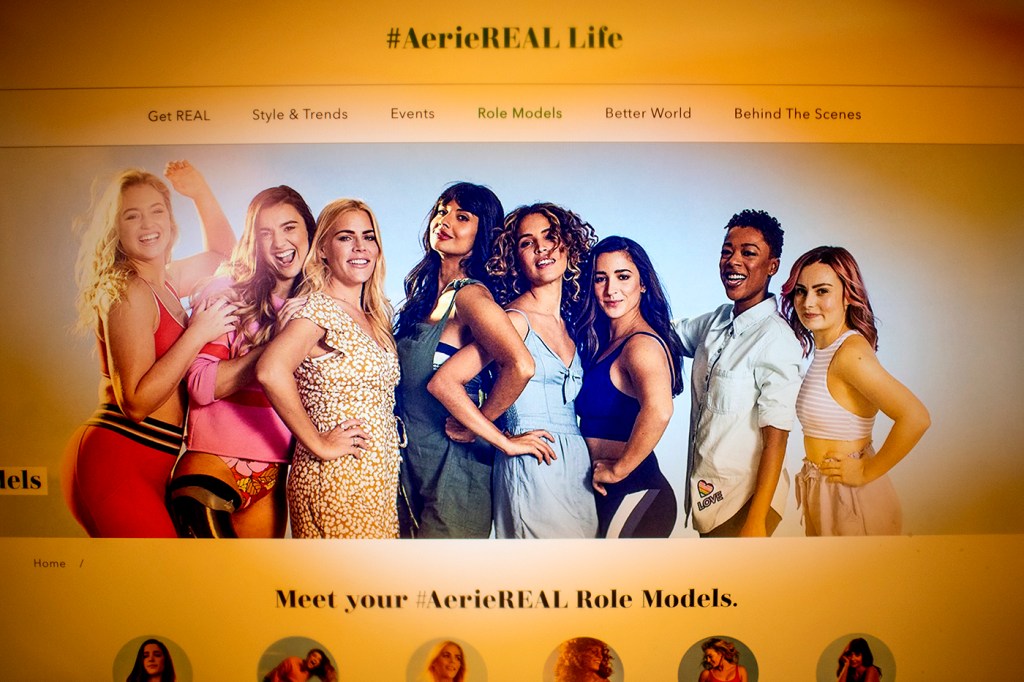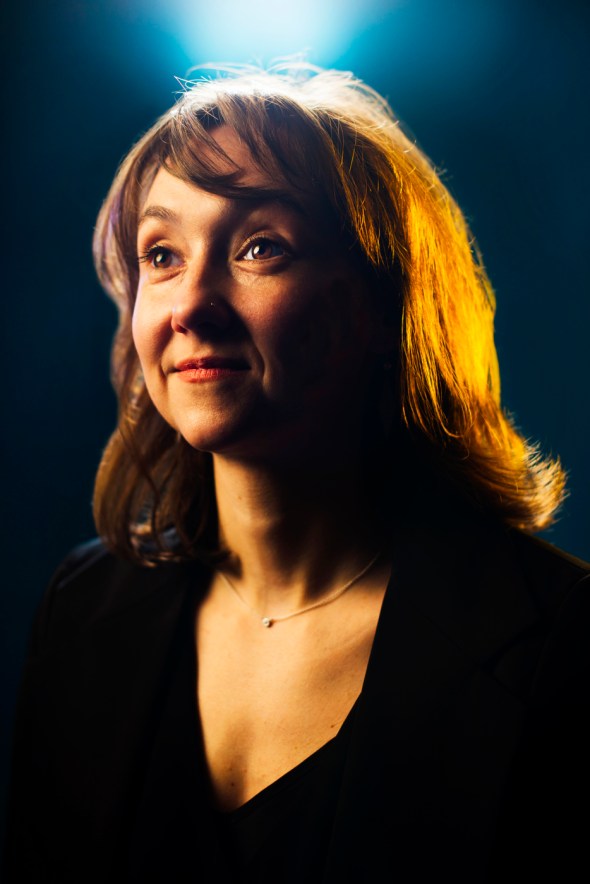When brands like Aerie, CVS, and Dove stop airbrushing their models, everyone wins

Over the past few years, a number of major brands have pledged not to airbrush or otherwise doctor the bodies of the models in their marketing campaigns.
Officials at these companies, which include CVS, Target, Dove, and Aerie, have announced that they would highlight real, un-retouched, bodies in their advertisements as a way to challenge unrealistic standards of beauty that slender, wrinkle-free models impose upon customers.
But do such campaigns have any effect on impressionable young people, who are more likely than adults to struggle with their body image?

Rachel Rodgers, an associate professor in the Department of Applied Psychology at Northeastern, studies the way that mass media influences body image and mental health. Photo by Adam Glanzman/Northeastern University
Yes, they do, and for a surprising reason, according to a new study by Rachel Rodgers, an associate professor in the Department of Applied Psychology at Northeastern University.
People who knew that the models in ad campaigns had been told in advance that their images wouldn’t be airbrushed, and nevertheless agreed to be photographed, felt better about their own bodies in return, Rodgers found.
“The idea that these models were happy and comfortable and relaxed in their bodies just as they were, with all their ‘imperfections,’ empowered the participants to feel more accepting of their own appearances,” says Rodgers, who studies the way that mass media influences body image and mental health.
For the study—which was published this summer in Body Image—Rodgers focused on a marketing campaign by the lingerie brand Aerie. The brand is geared toward a younger customer base: women who are 15 to 21 years old. In 2014, it launched a campaign to feature unaltered images of models who had a variety of body sizes and shapes, posing in their apparel.
The participants in Rodgers’ study also responded that they perceived Aerie more positively for its commitment not to enhance the model’s bodies. That’s an important takeaway for other brands considering the same thing, Rodgers says. The company also reported an increase in sales after they rolled out the campaign.
“This is clearly working for brands,” she says. “Hopefully [Aerie’s success] will lead to a broader systemic change,” that includes even more diversity along qualities other than body size, Rodgers says.
In her study, Rodgers took a sample of 35 undergraduate women, all of whom were between 18 and 23 years old, and interviewed them about their reactions to the marketing campaign.
Overwhelmingly, “the young women really liked the images,” Rodgers says. “They felt [that the images] had a positive effect on their own body image.”
The positive response, Rodgers says, comes partially because the survey participants saw their own body shapes and sizes reflected in the models, a departure from the established view of models as an archetypal, more ‘perfect’ version of ordinary people.
For example, one participant responded: “If they can be a model and look like that, then I can look like that.” The participants’ identities were not revealed in the study.
Rodgers says that the finding is important, because images in the media play an important role in the way people—young women in particular—feel about their bodies.
“We’re at the point that it has become normal for young women to be concerned about the way they look,” Rodgers says. “This leads to significant psychological distress,” she says.
In the years since Aerie launched the campaign that Rodgers studied, the company has “continued to diversify its imagery,” Rodgers says, to include models with disabilities, and models whose appearance does not conform to traditional norms.
Such a shift could have hugely positive consequences for people struggling with a negative body image, Rodgers says.
“It just challenges these conventions around the idea that there’s only one way of looking, that everybody needs to look this ‘perfect’ way,” she says.
For media inquiries, please contact Shannon Nargi at s.nargi@northeastern.edu or 617-373-5718.





